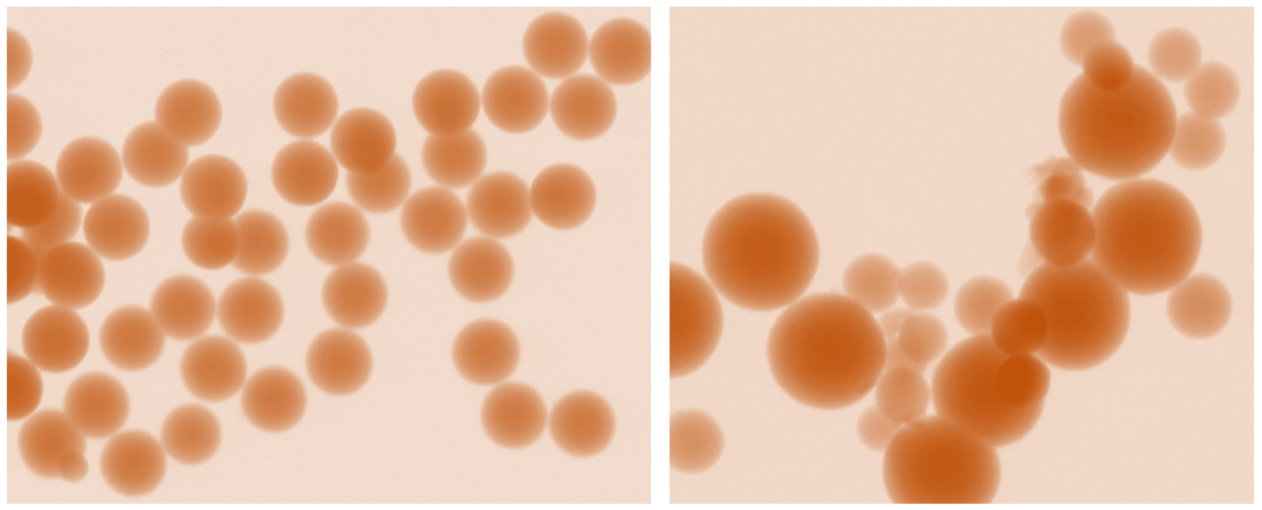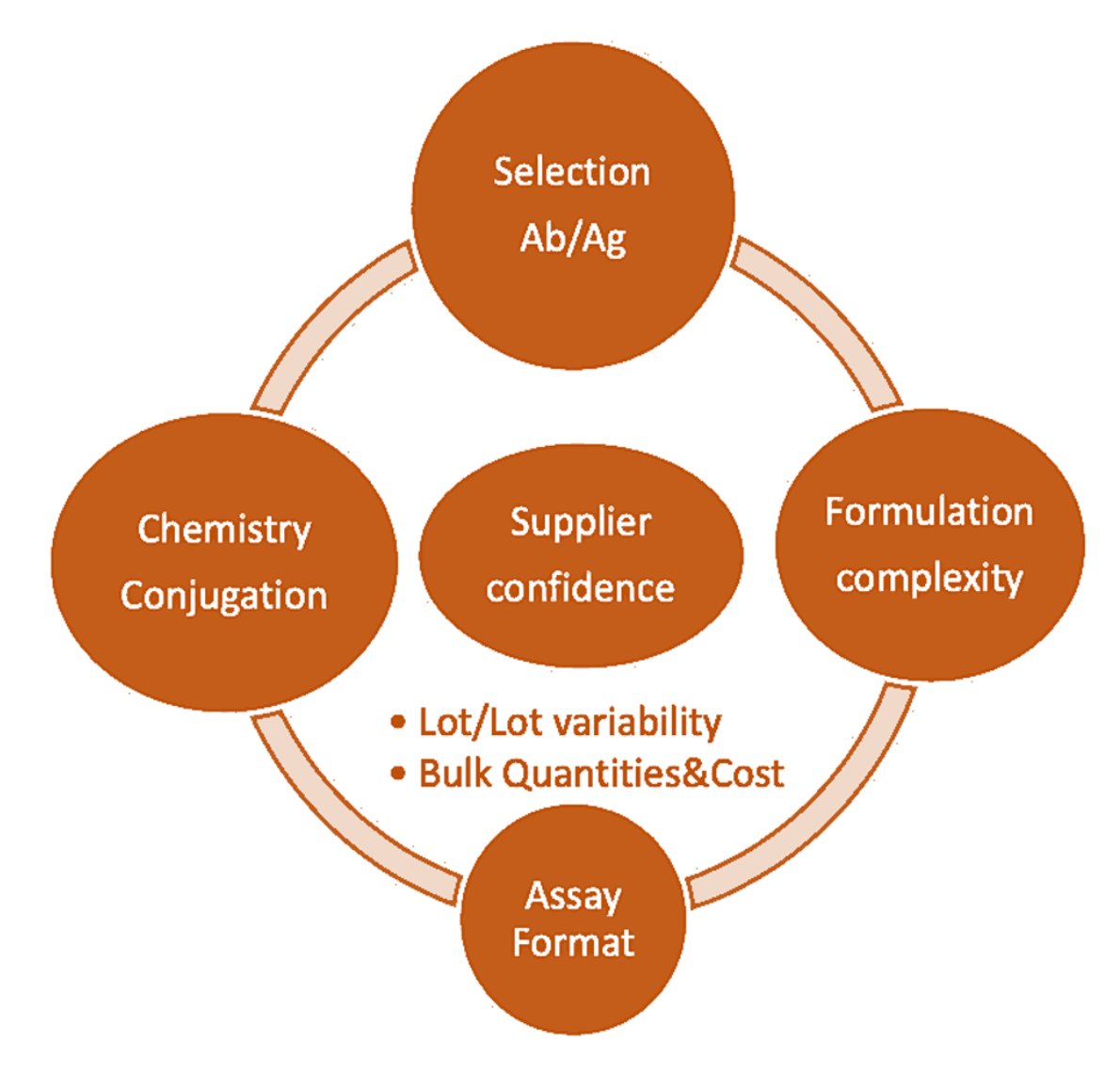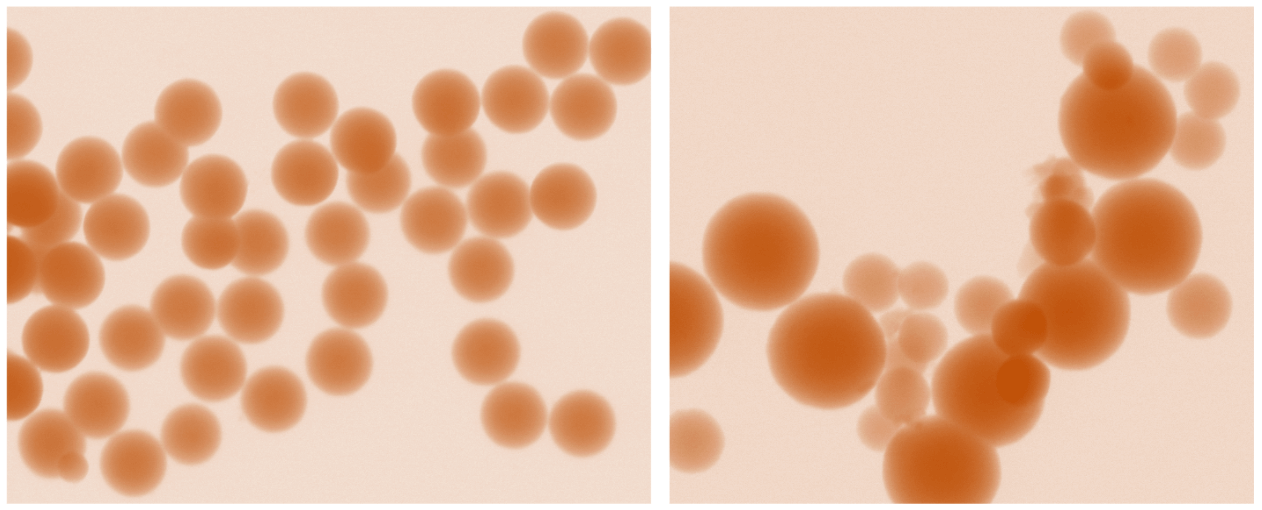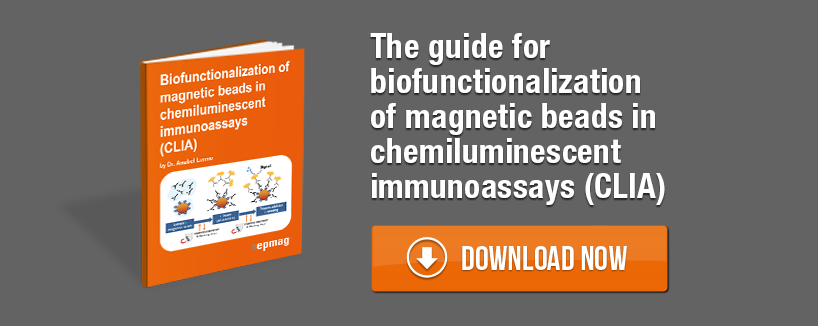Designing CLIA assays requires the consideration of different aspects, encompassing the raw materials for the reagent development & methods selection, together with the choice of the assay format. Material suppliers are a key factor for a successful design and development of an assay. An ideal supplier should be able to provide required raw materials not only at a reliable cost but also available to provide the required bulk quantities for scaling up the reagent. Moreover, suppliers should provide different lots to assess the lot to lot variability to check the impact in the assay to be developed.

Strategies for choosing magnetic beads
Magnetic beads are available in different sizes, ranging from nanometers to a few micrometers. Smaller beads will likely require more time to separate using a magnetic separator. The separation time of the magnetic beads depends strongly on the amount of the magnetic pigment. Higher pigment percentage will result in faster magnetic bead separation. A balance between the magnetic pigment and the size of the magnetic beads should be reached to maintain the correct density of the magnetic beads.

Chemical modified magnetic beads for CLIA
A simple but less stable strategy for conjugating a magnetic bead surface can be achieved through passive adsorption of the antigen or antibody directly on the surface of a “plain” magnetic bead. Alternatively, the modification of the surface chemistry of the magnetic beads is a great option if covalent attachment of the antigen or antibody is important for the assay. Active groups take advantage of the large surface area of the magnetic beads and provide abundant anchoring points for your antibodies or antigens to become covalently conjugated to the bead. Some examples of pre-activated chemicals that can be used are the popular Tosyl group or epoxy. There are other groups that are used which require activation, such as carboxyl (-COOH) groups, amines (-NH2), and hydroxyls (-OH). This practice is also known as the chemical functionalization of magnetic beads.

Biological modified magnetic beads for CLIA
Biological modified magnetic beads (also known as surface biofunctionalization) are also a common strategy for CLIA development.
There are several types of biological modified magnetic beads. The antibody or antigen of choice can be modified with a biotin linker which binds to a magnetic bead modified with streptavidin. Protein A binds the Fc region of most immunoglobulins making it an attractive choice for the immobilization of antibodies to the magnetic beads. Similarly,
Protein G binds either the Fc or Fab region of a spectrum of immunoglobulins and can be used to immobilize antibodies. Sometimes Protein A and G are used together to increase the spectrum of potential antibody binding. It is also possible to conjugate specific proteins but this requires optimization.
When biological modified magnetic beads are selected for a CLIA assay it is important to check the compatibility of these beads with the sample type, in order to prevent non-specific interactions with components of the sample with the biological surface of the magnetic beads.
Related news




